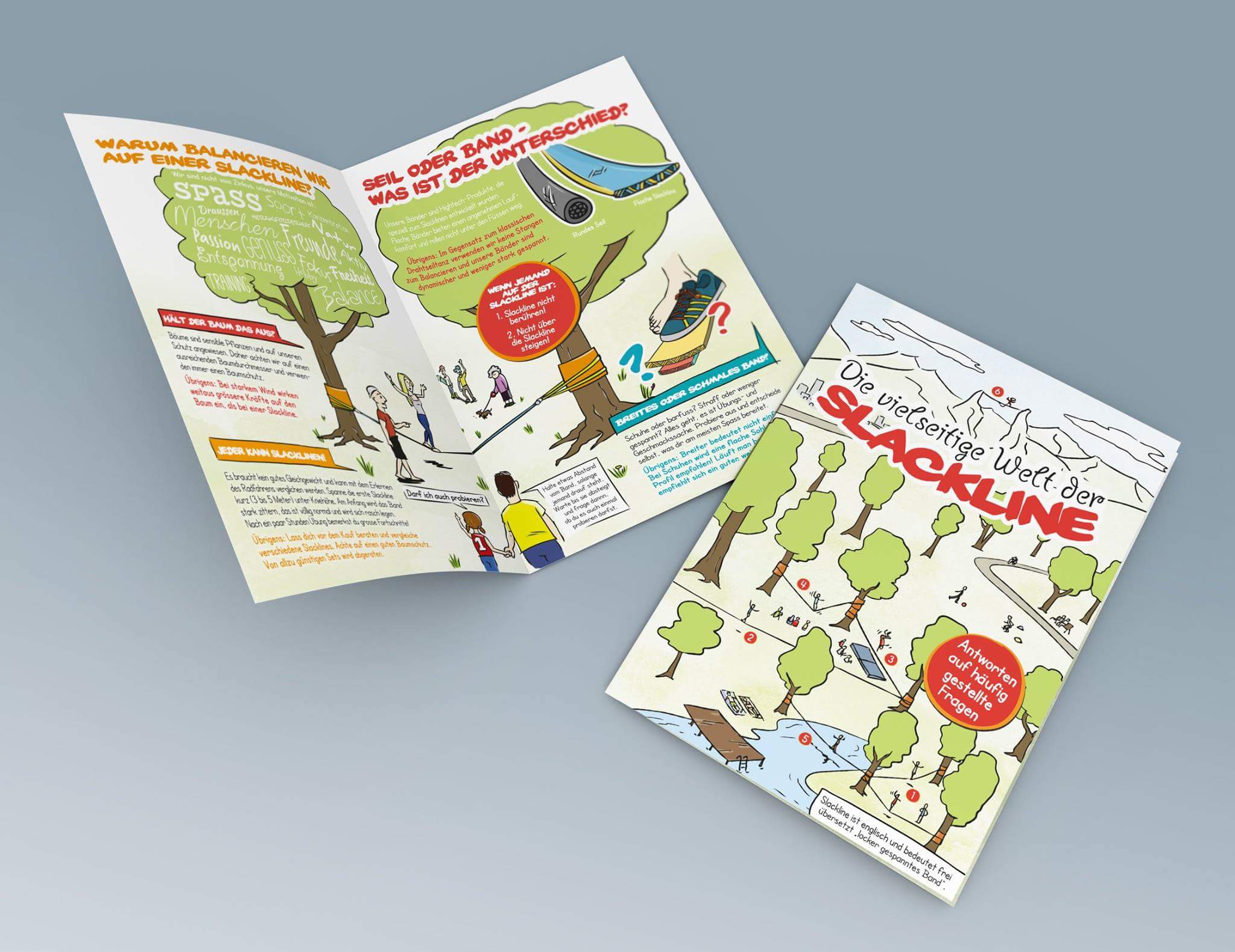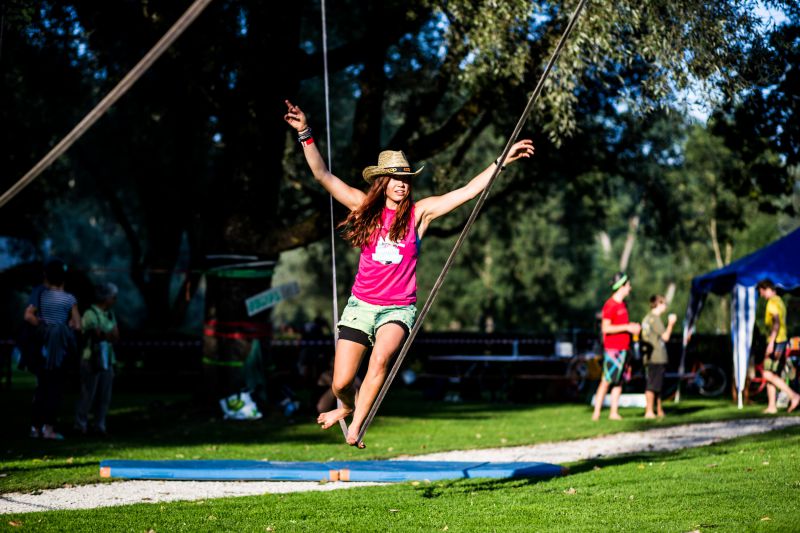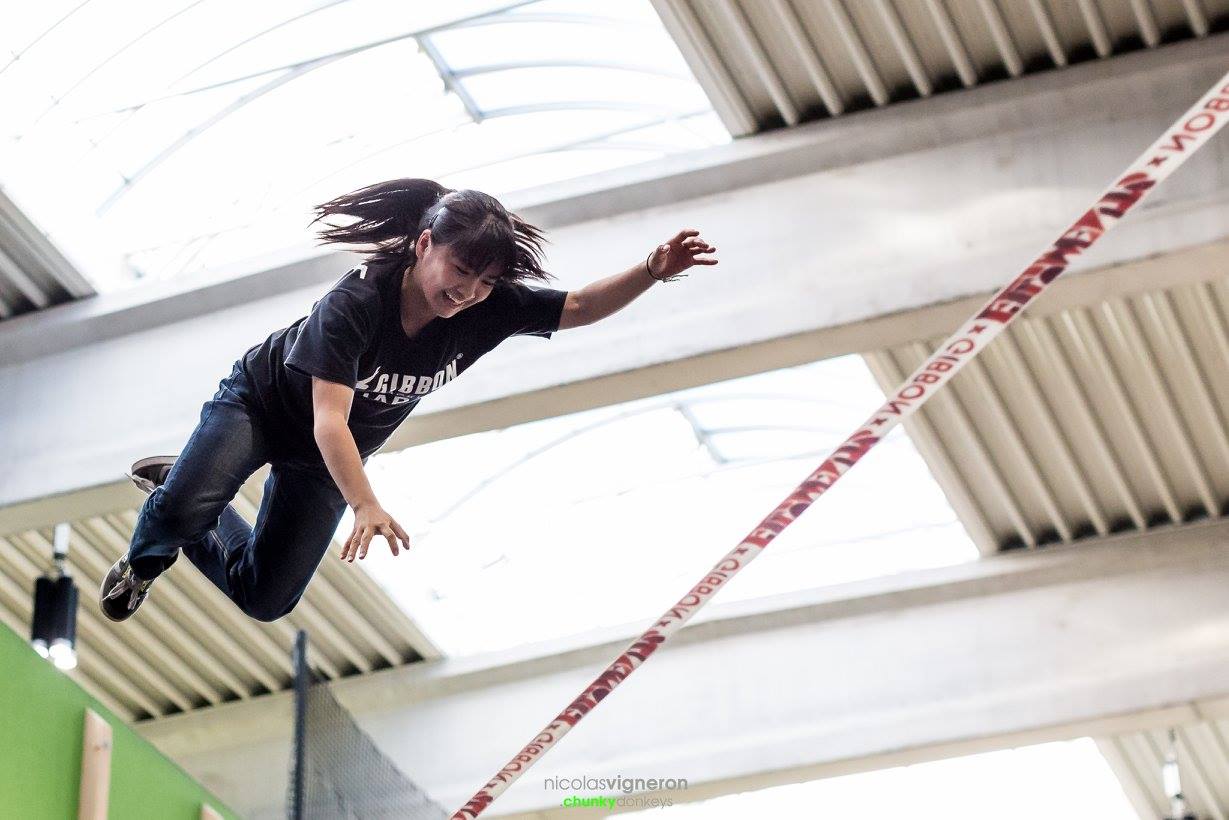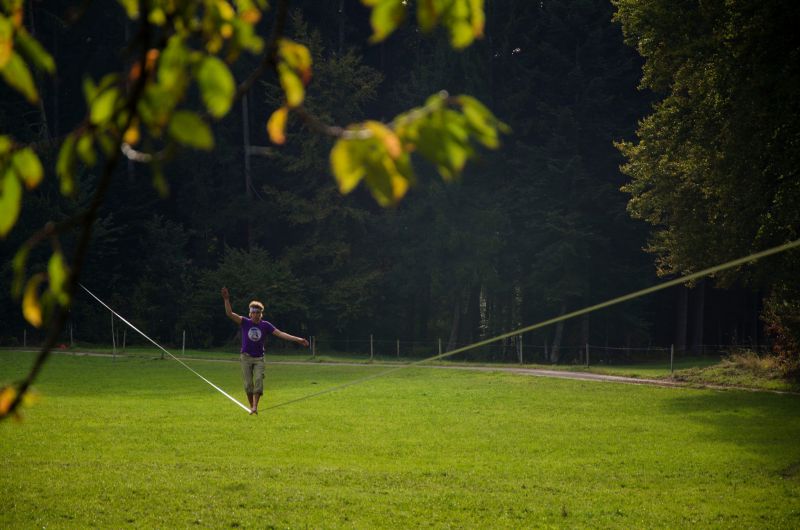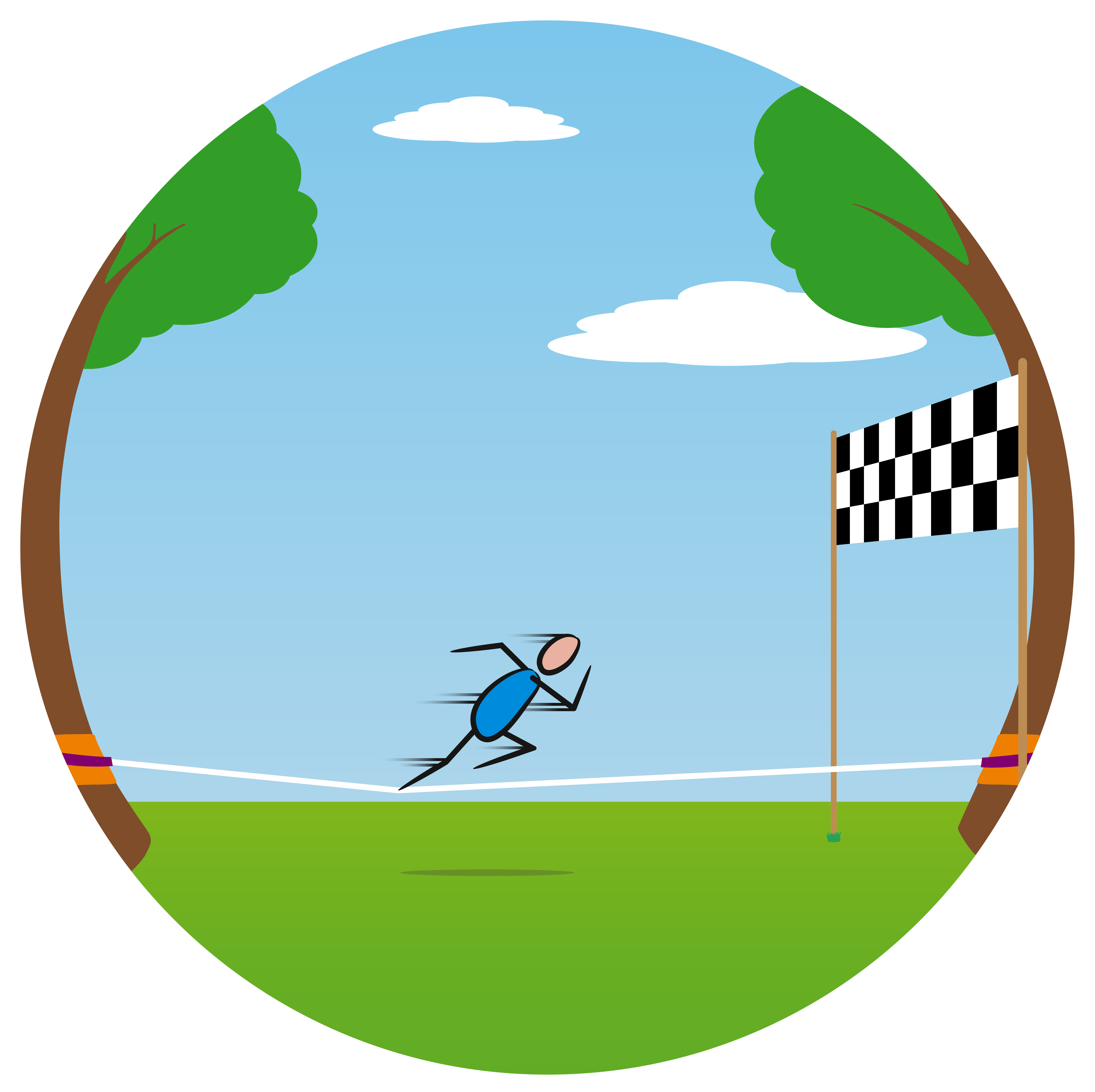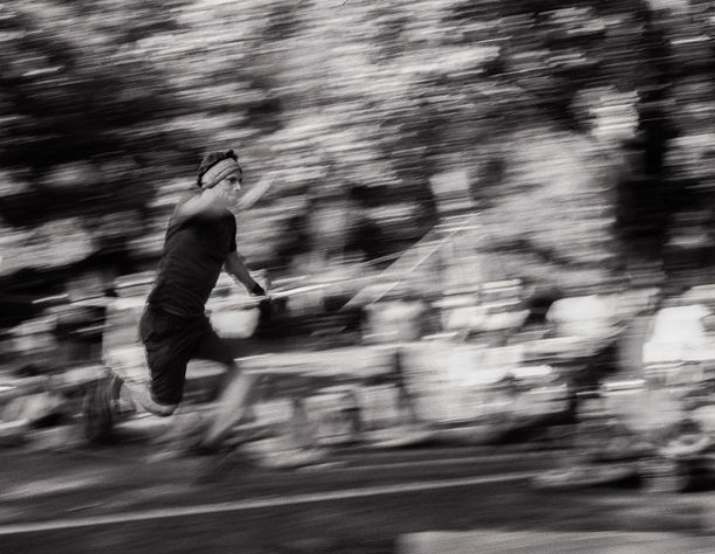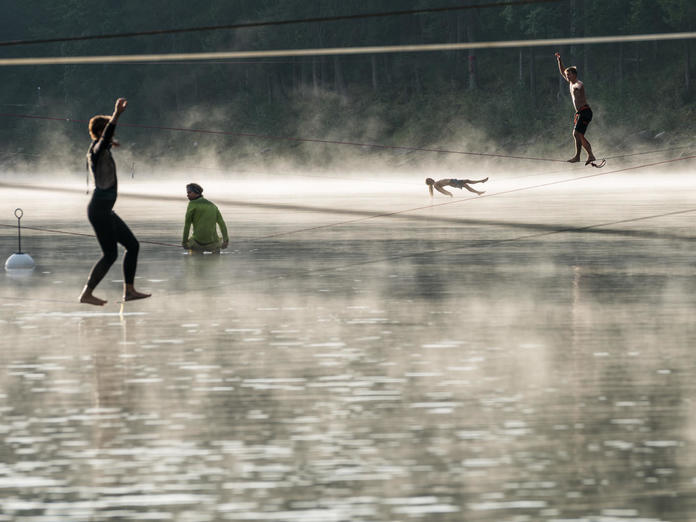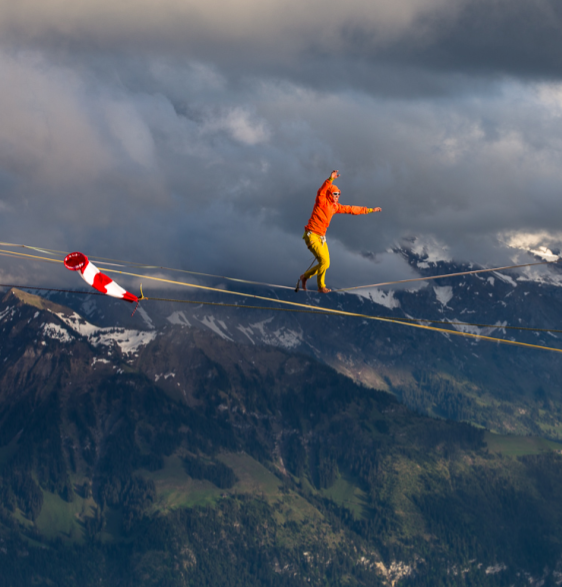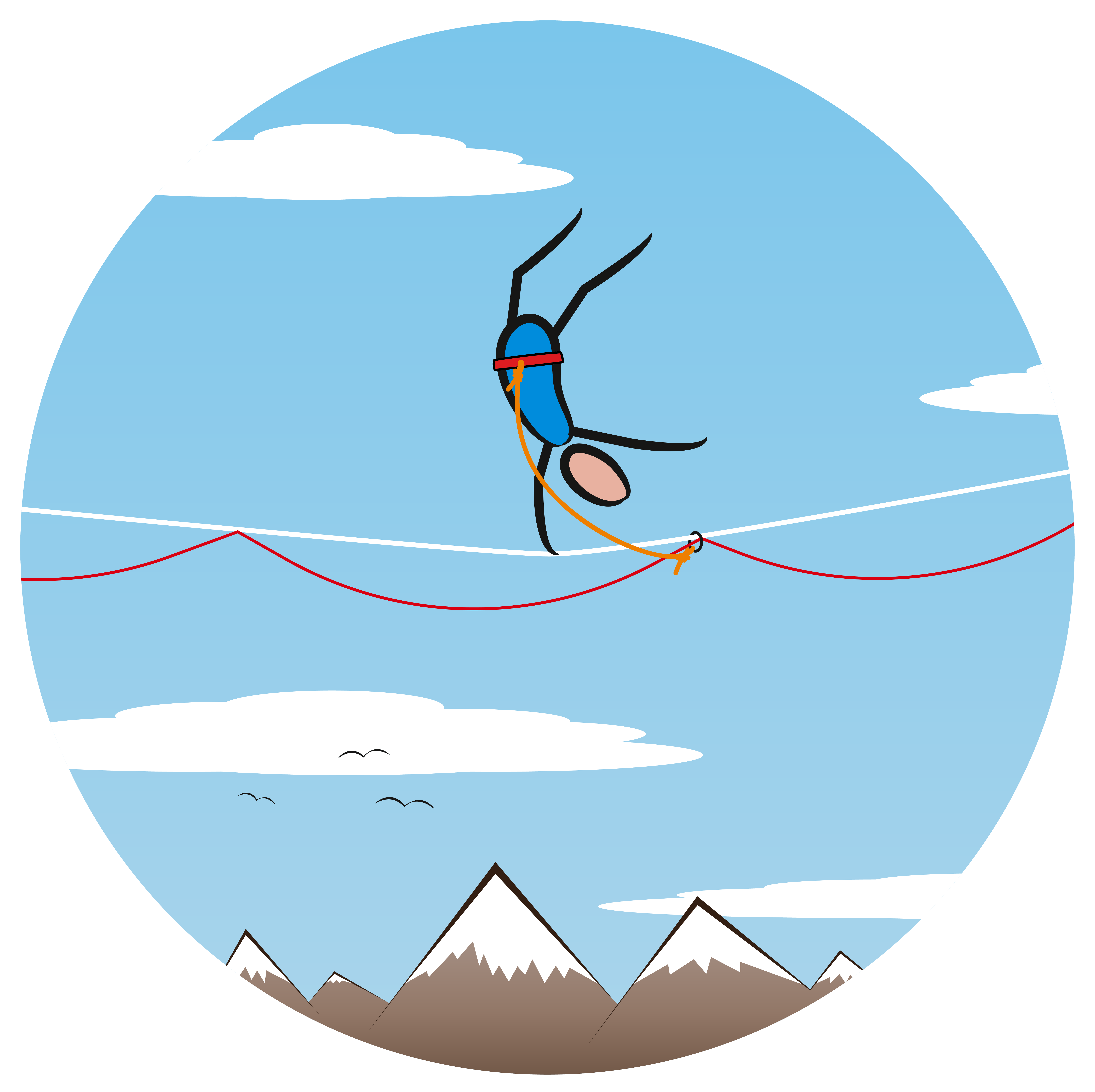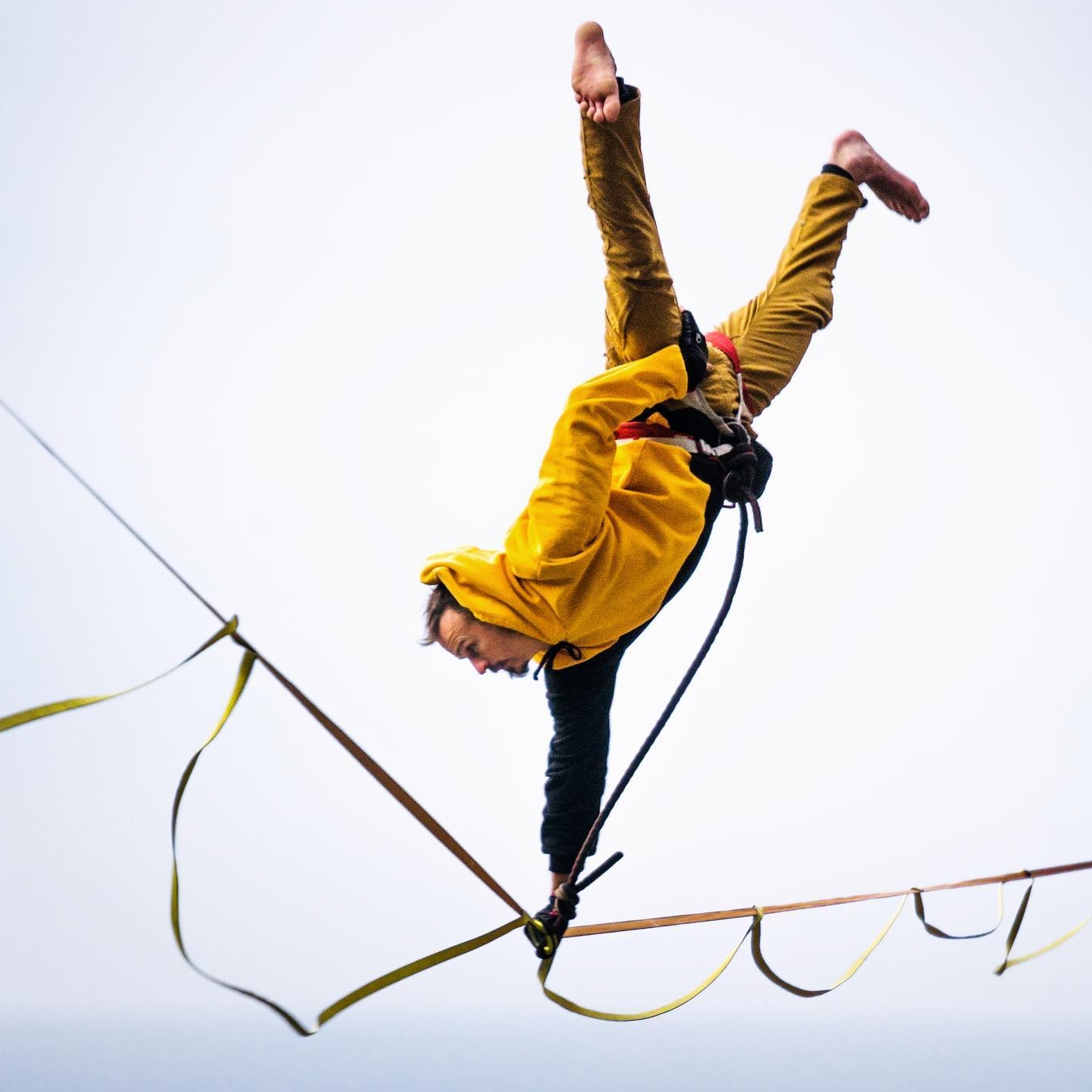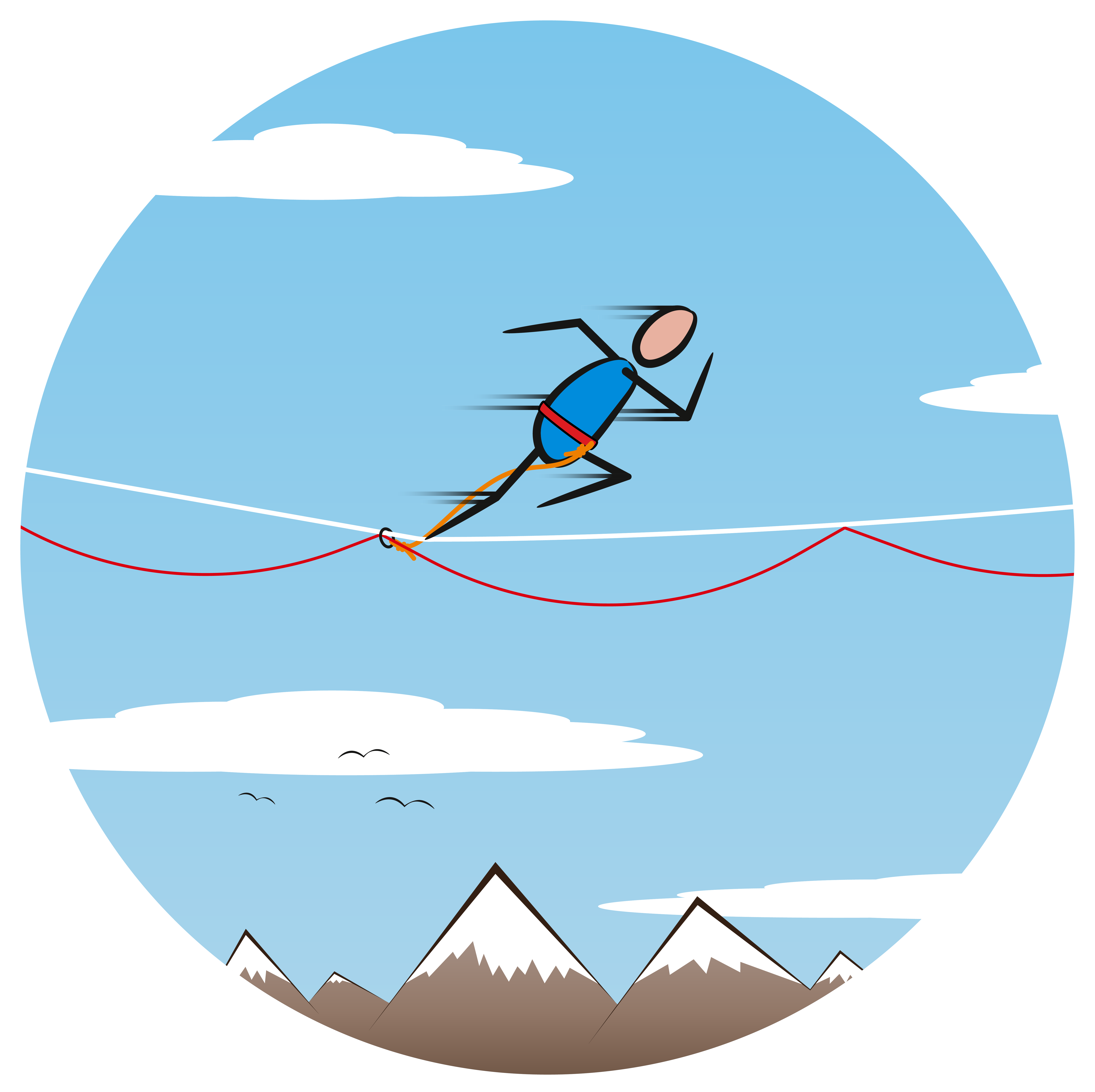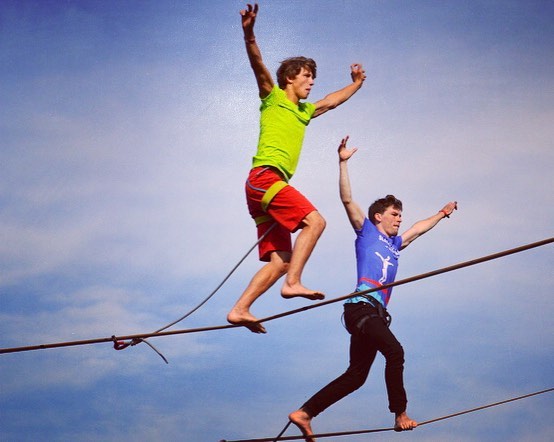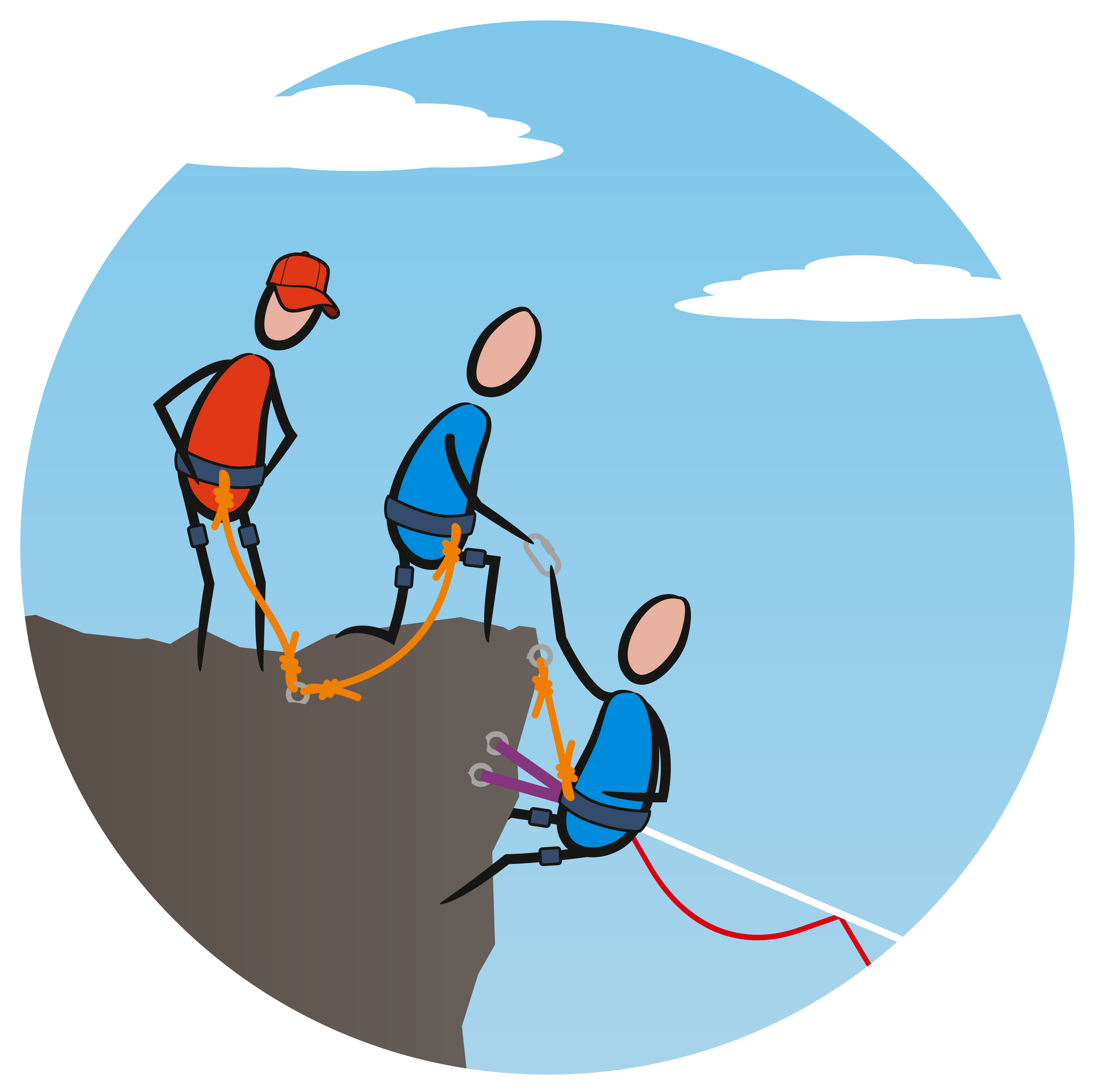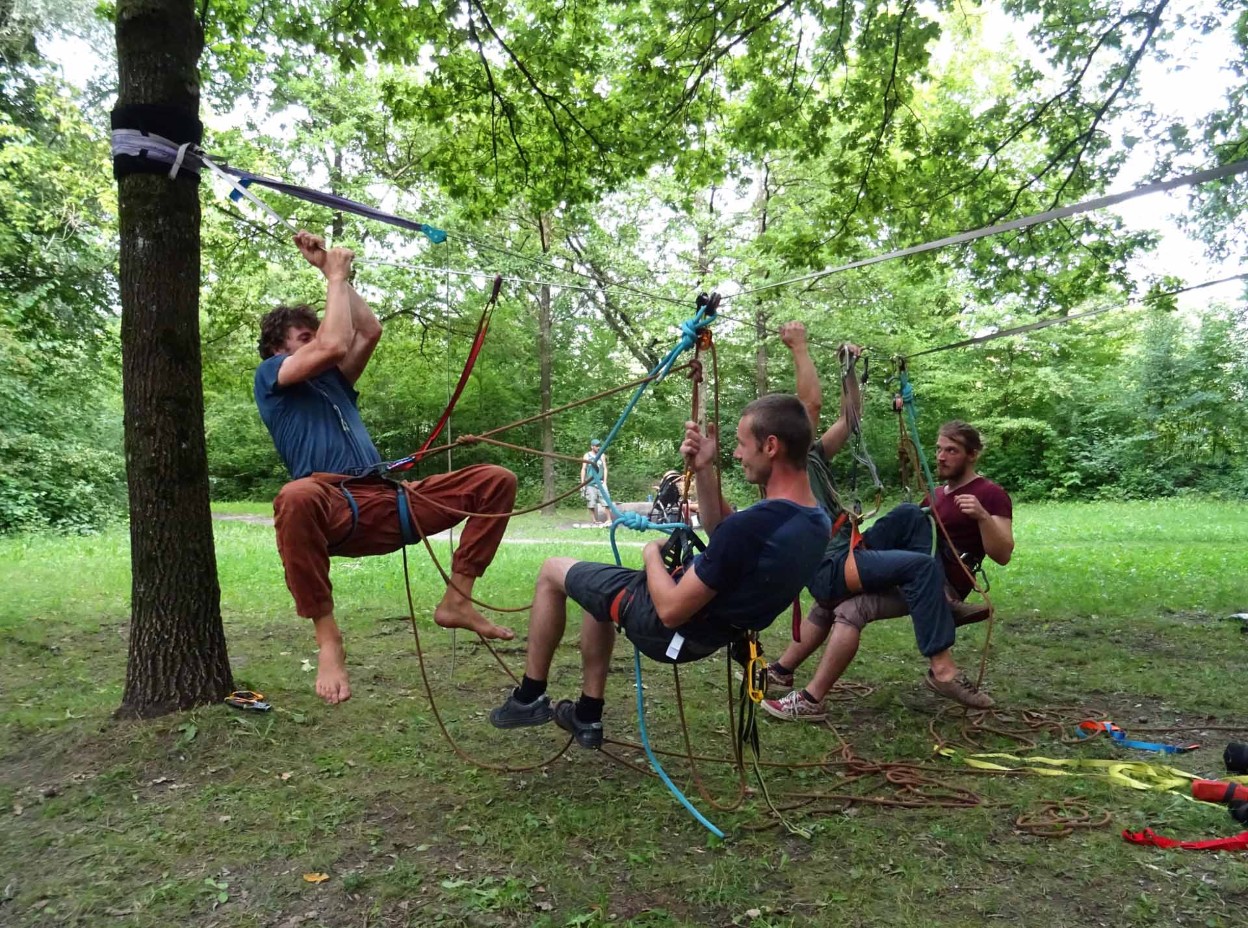History
Humans have been balancing on all sorts of things throughout the centuries, mainly on static cables, ropes or beams. In Yosemite Valley, Climbers spent their time on rest days balancing on chains in parking lots and the like. Slacklining emerged as an independent activity on stretchy webbing in the early 80ties from the climbing scene in Yosemite National Park. Adam Grosowsky and Jeff Ellington were the first to come up with the idea of using their climbing gear to balance on and introduced slacklining to the climber’s camps in the valley. From there it slowly spread into other countries within the climbing scene, and eventually all over the world. The slackline trend really took off around 2006 in Europe with the introduction of simple slacklining kits for everyone to set up a slackline and practice.
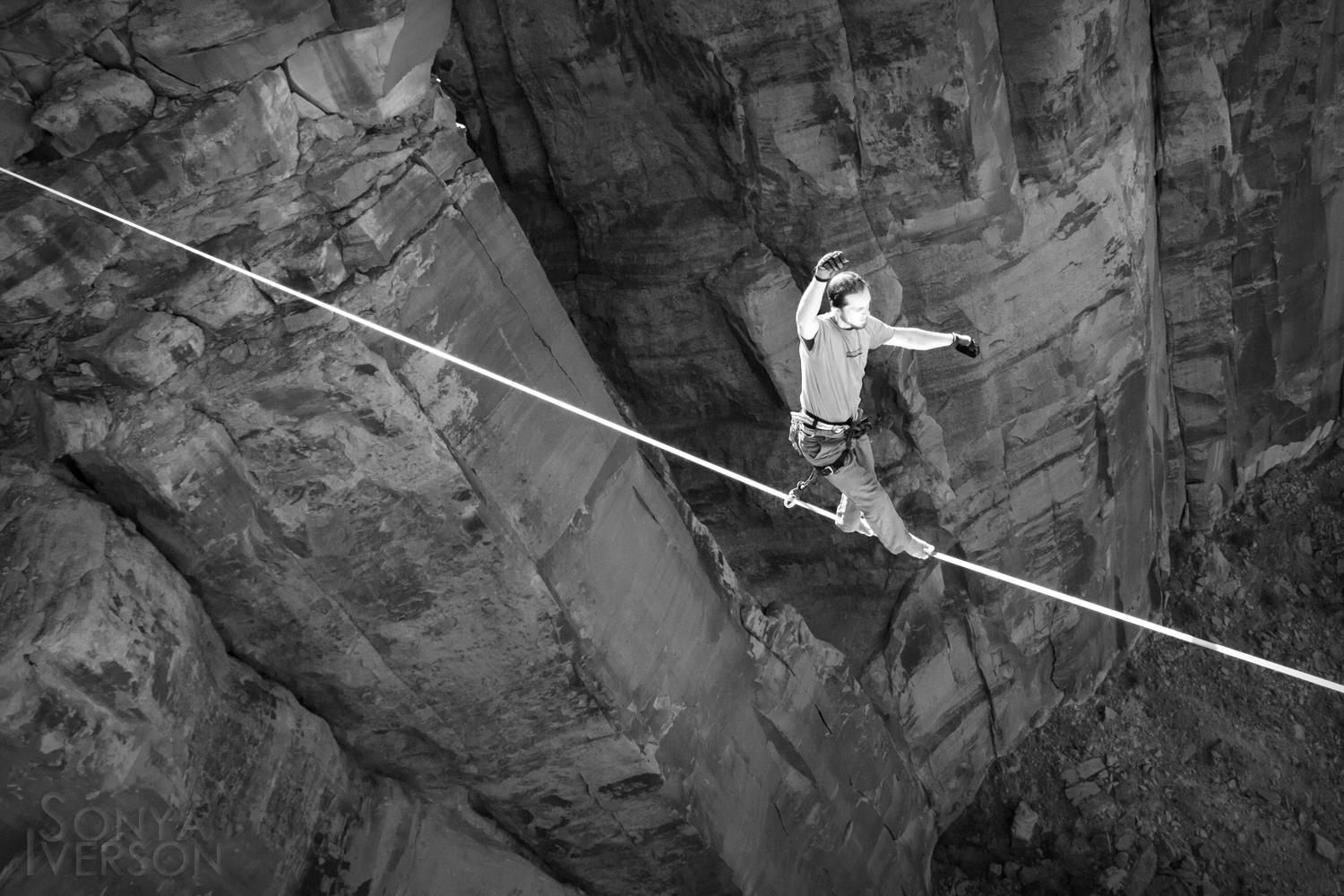
What is slacklining?
Slacklining entails balancing on a 2 to 5 centimetre wide piece of webbing made from synthetic fibres, which is rigged between to fixed points, often trees. Slacklining is an independent sport with many variations and disciplines, championships and professional athletes.
Slacklines are also used as a balance training aid in competitive sports, as fitness equipment or in physiotherapy. The activity also has creative aspects, with a tradition in performances and shows and as a tool for enriching public spaces. Furthermore, it is gaining a foothold in school sports, tourism and as a recreational activity in the public’s free time, which is partly due to slackline parks.
A slackline set basically consists of a piece of webbing (not a rope), two tree slings and a tensioning system – if the slackline is to be rigged between two trees, the set should also include tree protectors.
Slacklining can be subdivided into lots of variations and disciplines, the most practiced ones are:
Novice Slacklines | Rodeolines | Freestyle Tricklines | Speedlines Short | Longlines | Waterlines | Highlines | Freestyle Highlines | Speed Highlines | Rigging and Rescue
How is it different from tightrope walking?
The name “Slackline” says it all, the line is not under a lot of tension. In contrast to steel cables, slackline webbing is able to stretch under load and behaves dynamically, the person on the line has to constantly seek balance on the line. Balancing poles are not normally used and don’t work well on Slacklines.
While tightrope walking has a long circus tradition, slacklining is a rather young activity. In principle all the tricks shown by performers on the steel cable are also possible on the slackline. As a result of the elastic properties of the webbing, there are also a variety of dynamic tricks that can be pulled off on a slackline. Other differences are that slacklines can be rigged with very little effort and require far less and lighter gear.
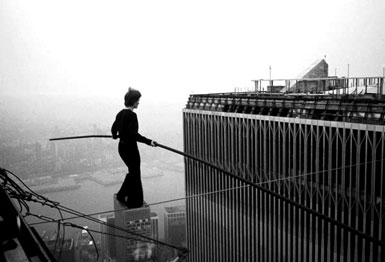
Philippe Petit at WTC (New York 1974, © Jim Moore)
Variations and Sport Disciplines
Novice Slacklines

Every novice starts out with a short, 2 to 5 centimetre wide slackline. These are rigged between to anchorpoints, mostly trees. There is no special sense of balance needed to slackline, everyone can learn it! The first steps seem impossible, however, with the right tips one advances fast.
Rodeoline
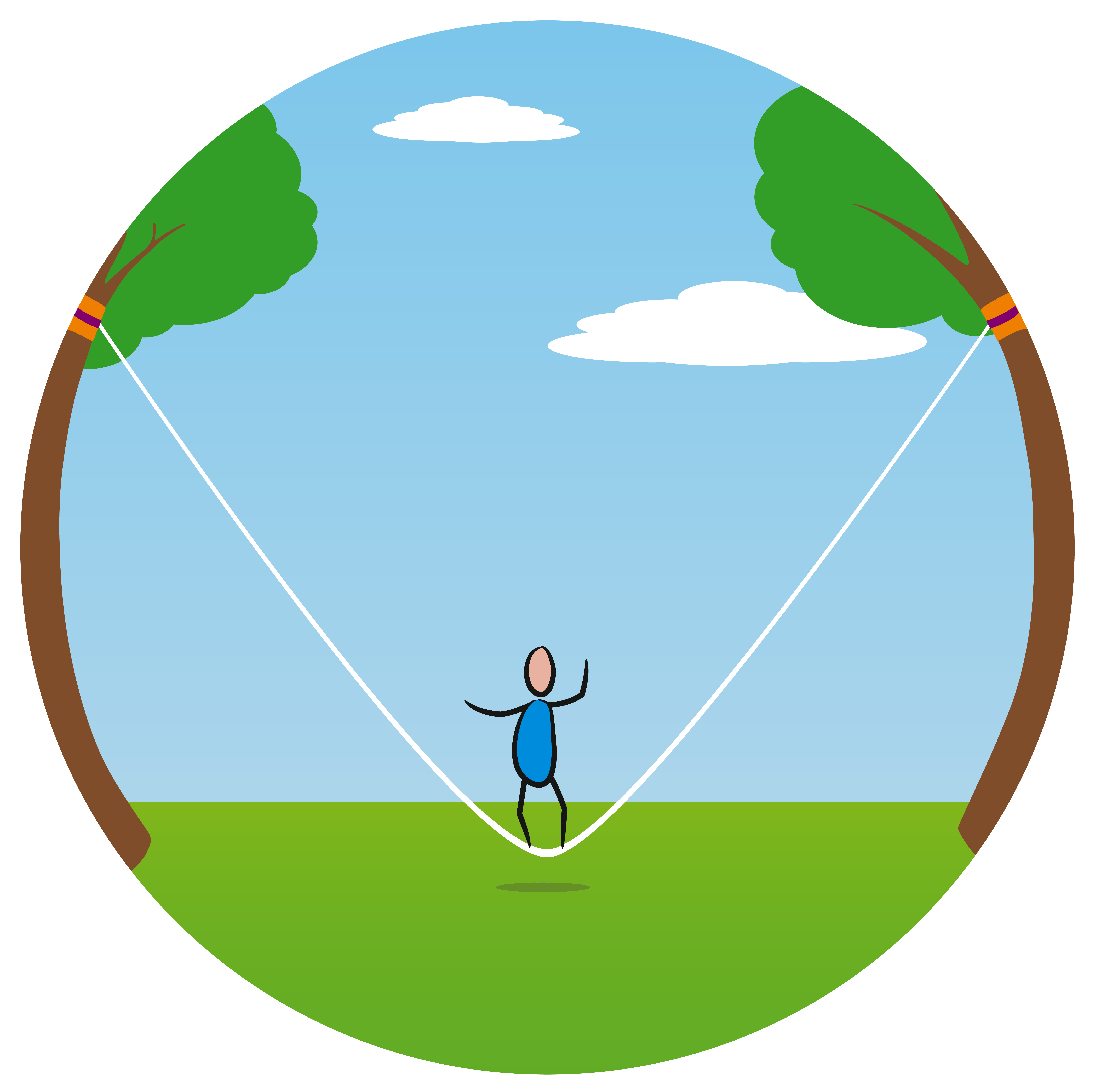
The rodeoline is anchored higher (starting at around two to three metres) and just hung there so that is sags almost all the way to the ground. These lines are walked differently, as it is not possible to walk from one end to the other. People tend to stay in the middle of the webbing, swing from side to side and practice acrobatics. They are very suitable for training and shows and similar to slackropes used in circus.
Freestyle Trickline
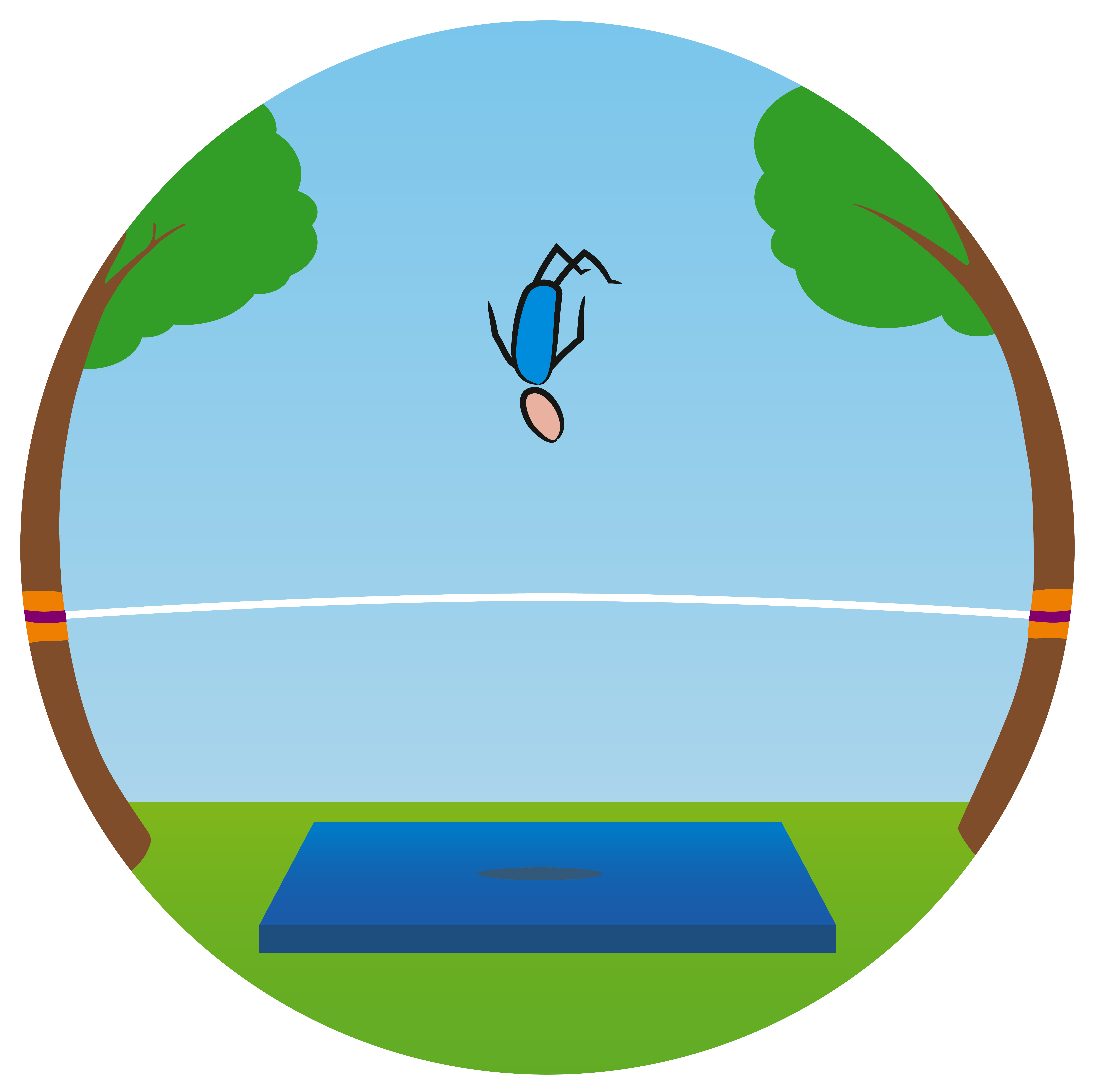
Tricklines (sometimes Jumplines or Jiblines) are between 15 and thirty metres long and very taut. This gives the webbing characteristics similar to a trampoline. It is possible to jump from feet to feet, or go to chest, to butt, to back and back to feet for example, in all fathomable combinations including flips and spins. Championships and Contests take place all around the world since several years and are recorded in our ranking list.
Longline
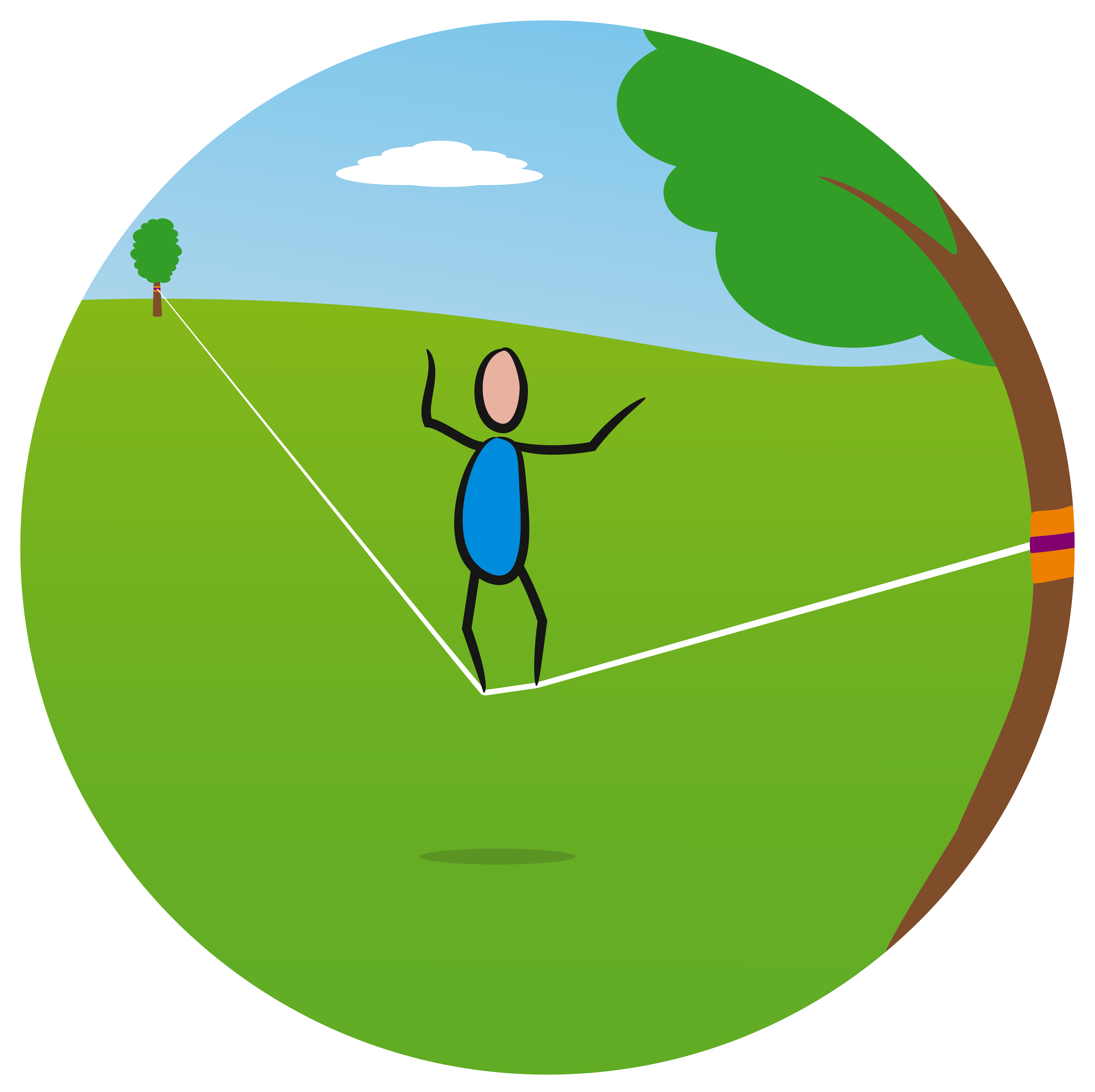
Starting from a length of around 30 metres slacklines are classified as longlines. The longer the lines, the more difficult it becomes to walk, in particular because the ability to concentrate is under constant stress. To exemplify: The world record in longlining is at over 600 meters in length – hence more than half a kilometre on a narrow synthetic piece of webbing.
Waterline
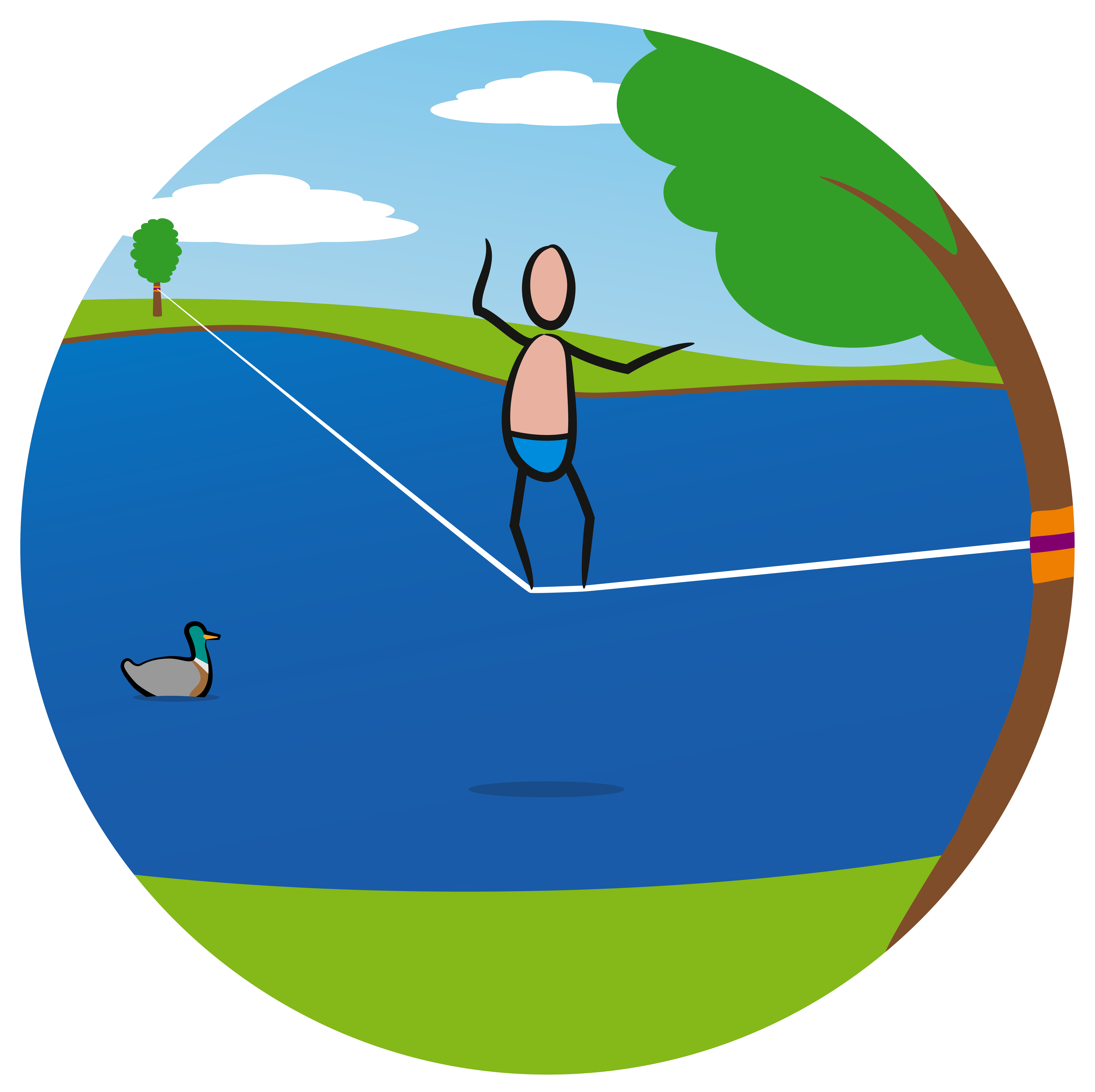
A slackline that goes over a body of water is called a waterline. These are especially tempting in summer. It is important that the water is deep enough all the way along the line, so that a fall cannot occur into shallow water. Walking on a waterline is significantly more difficult than on a normal slackline, as water moves and confuses the eye.
Highline
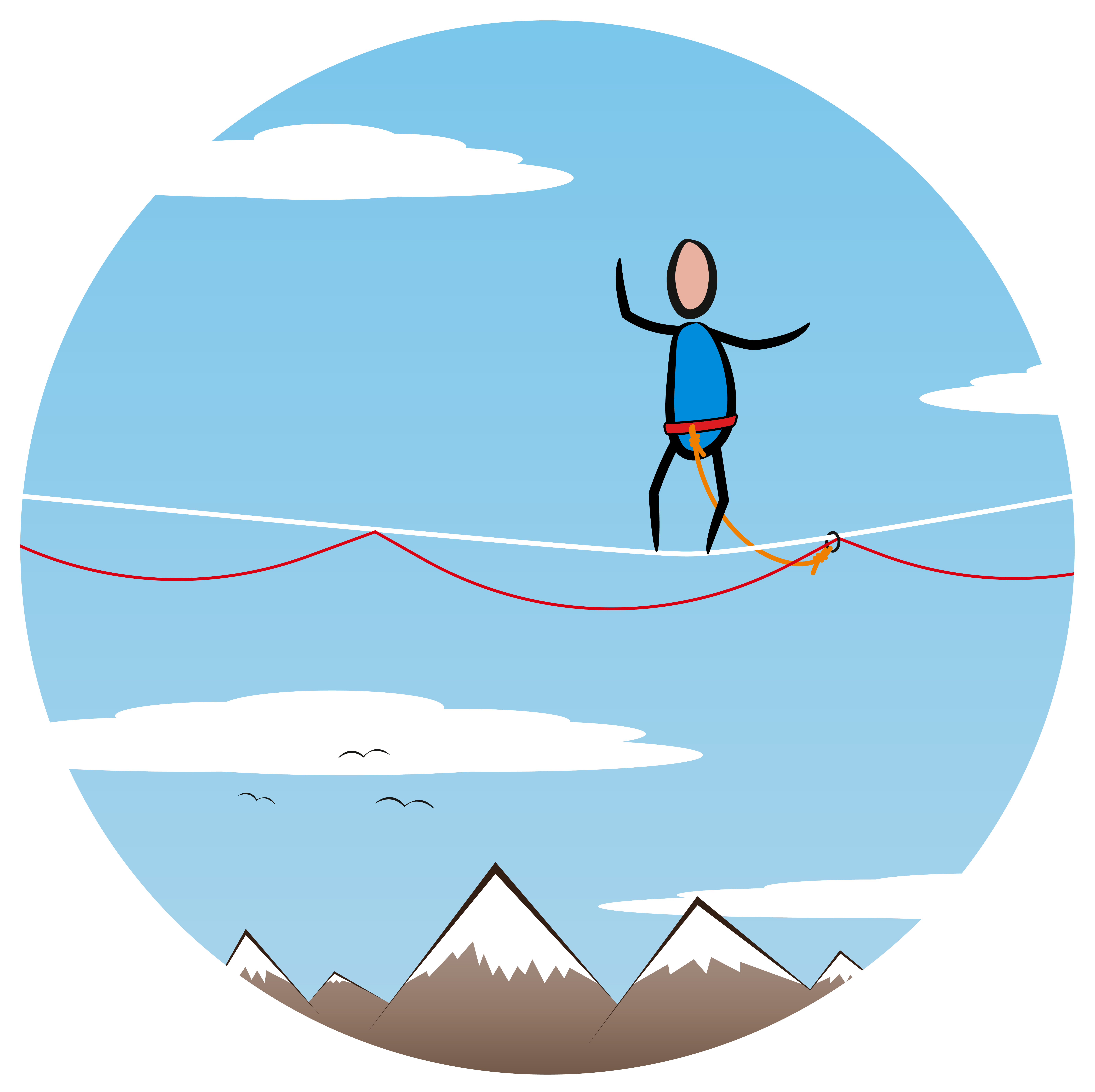
Highlines are rigged at great heights, between rocks or even peaks for example. In highlining it is not only balance that matters. Even people free of vertigo fight their instincts here. To protect themselves against life-threatening falls, highliners double up the webbing with a second system (rope or another webbing – principle of redundancy) and attach themselves to those two systems with a harness, safety rope (leash) and a ring that goes around both systems.
Midline
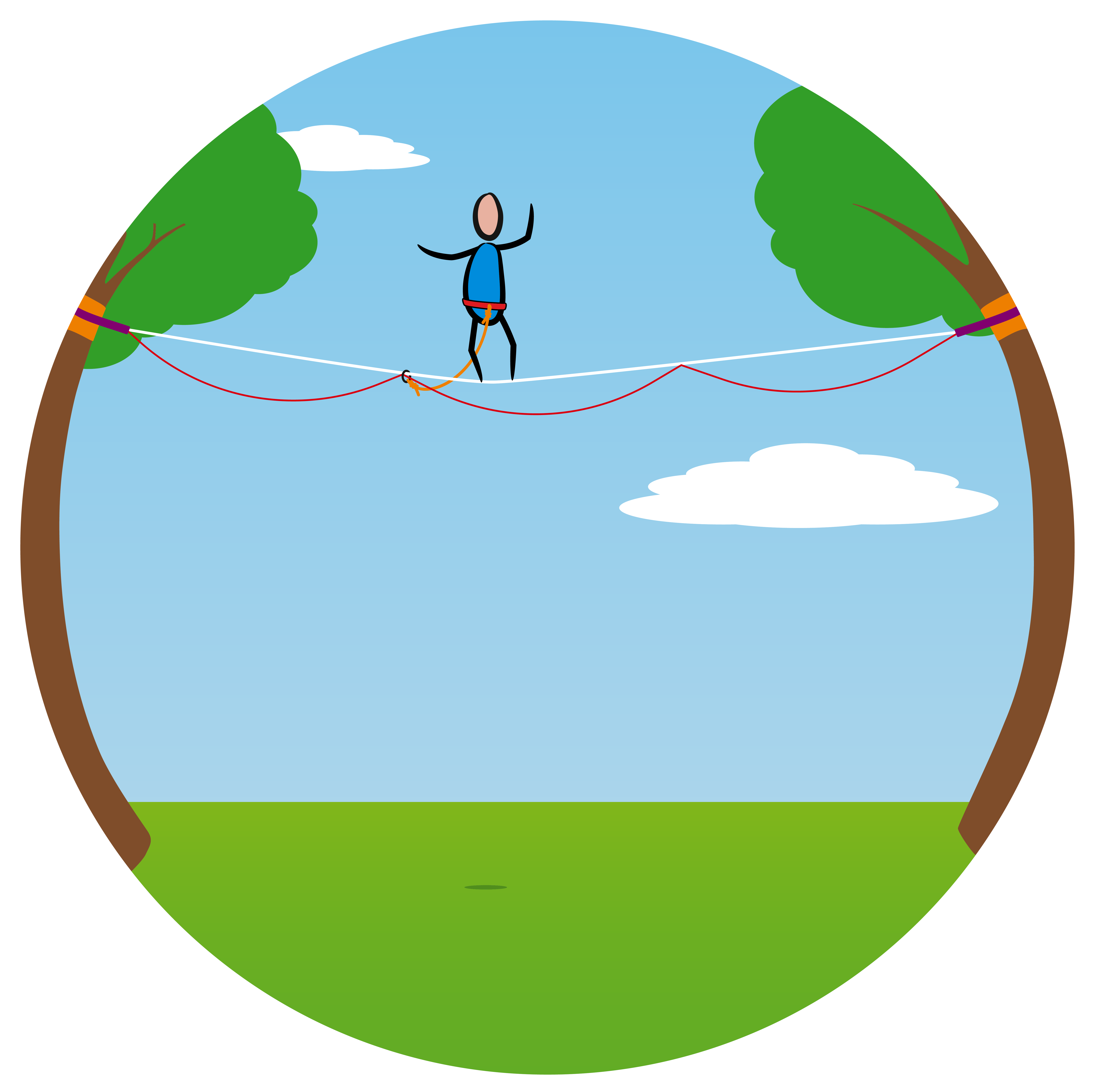
Midlines are low highlines, they are usually easier to install and access. To protect themselves against life-threatening falls, midliners have to also take special precautions. In order to not hit the ground below them, they have to choose their materials and anchors wisley.



